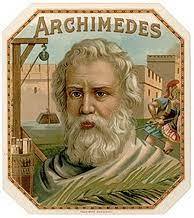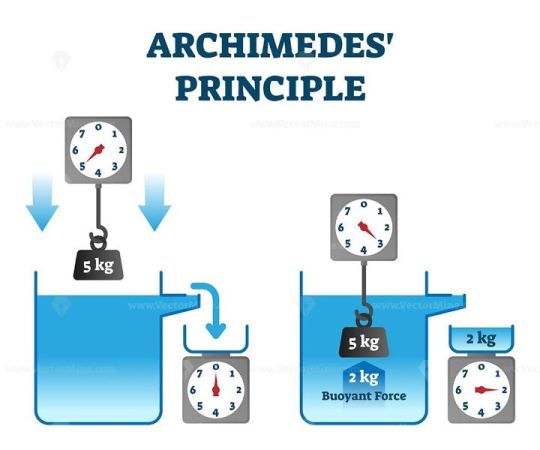Photo

Archimedes of Syracuse
Born: 287 BC Syracuse, Sicily (now Italy)
Died212 BC Syracuse, Sicily (now Italy)
Summary:
Archimedes was the greatest mathematician of his age. His contributions in geometry revolutionised the subject and his methods anticipated the integral calculus. He was a practical man who invented a wide variety of machines including pulleys and the Archimidean screw pumping device.
0 notes
Photo

Bibliography
Archimedes was born in 287 B.C. in the port of Syracuse, Sicily. His father was Phidias, who was an astronomer. “Archimedes used dust, ashes or any other available surface to draw his geometric figures.” He used to get so engaged in his work that sometimes he forgot to eat. Archimedes lived for 75 years. “Except for the period of his life where he attended school in Alexandria at Euclid's, Archimedes spent all his life at Syracuse.”Archimedes achieved so much fame because of his relation to King Hiero II and Gelon (son of King Hiero II). He was a close friend of Gelon and helped Hiero solve complex problems with ease,thoroughly amazing his friend. “Archimedes died in 212 B.C. during the Second Punic war, when Syracuse was captured by the Roman forces after a two year siege.” Archimedes was researching a mathematical diagram, when a Roman soldier ordered him to meet General Marcus (who was engaged in the siege of Syracuse). But Archimedes refused saying that he had to finish his diagram. Furious, the Roman soldier killed Archimedes. “Another popular theory regarding Archimedes' death is that he was killed while actually surrendering to the Romans.” This source is credible because it is Published by an University. It is also credible because it is a combination of 6 different credible websites.
0 notes
Photo

Education Background
Archimedes was born in Syracuse on the eastern coast of Sicily and educated in Alexandria in Egypt. He then returned to Syracuse, where he spent most of the rest of his life, devoting his time to research and experimentation in many fields.
0 notes
Photo

Archimedes Principles
Archimedes Principle is named after its discoverer, the Greek mathematician, and physicist ‘Archimedes.’ It is based on the principle of buoyancy, which states that if a body is partially or fully submerged in the fluids (gases or liquids), then the fluid exerts an upward force called the buoyant force on the body whose magnitude is equal to the fluid weight displaced by the body. The Buoyant force acts at the center of gravity point of the displaced fluid, this point is known as the center of Buoyancy.
The Buoyant force exerted on the body by the fluid is mathematically expressed as,


Where Fb is the Buoyant force acting on the body, ρ is the density of the fluid, g is the acceleration due to gravity, V is the volume of the displaced fluid.
The above expression shows that the buoyant force is directly proportional to the density of the fluid, acceleration due to gravity, and the volume of the fluid displaced by the body. If two objects of equal masses are submerged in the fluid, then the object having greater volume will experience a greater buoyant force.
0 notes
Photo

How Archimedes’ Principle Was Discovered
The story behind the discovery of Archimedes’ principle is pretty interesting. Late in the first century, The king of Syracuse ‘Hieron II’ called ‘Archimedes’ to check the purity of his new crown without causing any damage to it. He wanted to know that whether his new crown was of pure gold or not? Archimedes thought for a long time to find out the method of checking the purity of the king’s crown, but he couldn’t find it. Later, one day, when he went for the bath, and he entered the bathtub, he noticed that the weight of the water displaced by his body was equal to that of his own body weight. By using this principle, he found the method to check the purity of the crown. He knew that the gold was heavier than the other metals that the goldsmith might have had used as the substituents in the crown. By immersing the crown and a pure gold piece of the same mass as that of the crown in the water, he found that the density of the crown was less than the density of the pure gold piece as the crown displaced more water than the pure gold, hence the crown was not of pure gold. In the excitement of finding this method, he ran naked to the king, shouting “Eureka!,” which means “I have found it.” So in this way, the “Eureka” moment led to the discovery of Archimedes’ principle. This story was written by a Roman architect, ‘Vitruvius.’
0 notes
Photo

1.) SHIPS
The iron nail sinks in the water because the weight of the water displaced by the nail is less than its own weight, i.e., the density of the iron nail is more than that of the water. While constructing ships, Archimedes’ principle is followed, a large portion of the ships are kept hollow from inside that maintains their density less than the water density, hence the weight of the ship becomes less than the weight of the water displaced by it, and the buoyant force of magnitude equal to the displaced water exerts on the ship, and the ship floats on the surface of the water.
2.) BEACH BALSS
Beach balls are filled with air only, so they have a very small weight, hence they do not displace much water. Since they displace less water, the buoyant force acting on them is also very less, but when we try to push the ball into the water, the buoyant force acting on it increases, which does not let the beach ball sink into the water, and it floats on the water surface.
3.) SUBMARINES
Submarines also work on Archimedes’ principle. Submarines can be submerged into the water and can also float on the surface of the water by maintaining the densities of the displaced water and submarine. These densities are maintained by the two important components present in the submarine that are the compressed tank and the ballast tank. If we fill the ballast tank with water, it results in a greater density of the submarine than the density of displaced water, hence the submarine dives into the water, whereas if this water is expelled out from the ballast tank with the help of the compressed tank, then the average density of the submarine becomes lesser than the density of the displaced water, and the submarine floats on the water surface.
4.) FLOATING
Every object displaces the water of weight equal to its own weight. If the weight of the body is greater than the upthrust force acting upon it then the object sinks, whereas if the weight of the body is equal to the upthrust force acting upon it then the body floats on the liquid. Ice and icebergs float on the surface of the water because of the balanced upward buoyant force acting on them. So, the principle of floating is that the upthrust force acting on the body should be equal to the weight of the liquid displaced by the body.
5.) HYDROMETER
A Hydrometer is an instrument that is used to measure the specific gravity or density of the liquids. It works on Archimedes’ principle. It consists of a hollow glass tube with a bulb-shaped wider bottom, sealed from both ends. The wider bottom works as ballast tank, and it is usually filled with the lead, and the liquid whose density is being measured is poured in the narrow tube that has the graduations for the measurement. The hydrometer is placed in the sample liquid, and when it gets stabilized, readings are noted down. The level of hydrometer submerged in the liquid and the water displaced by it are measured to calculate the specific gravity of the liquid. If the hydrometer sinks deep in the sample liquid, it implies that the density of the liquid is less, i.e., the specific gravity of the sample liquid is less.
6. SWIMMING
Archimedes’ principle also comes into play when you are swimming. While we swim, the upward force, also called the buoyant force, acts on us. The swimmer is able to float on the surface of the water as the pressure above the swimmer is greater than the pressure from beneath as the density of the water is greater than that of the air. It is commonly seen that it is easier to swim in saltwater than freshwater because the buoyant force not only depends on the water displaced but also on the density of the fluid. The density of fresh water is 62.4 lb and that of saltwater is 64 lb As saltwater has a higher density than freshwater, the buoyant force acting on the body in saltwater will also be higher as compared to freshwater, which is why it is easier for the swimmers to swim in the saltwater.
7. HOT AIR BALLOON
Archimedes’ principle is also applied to the working of hot air balloons. The balloon rises in the air when the weight of the air surrounding the balloon is greater than its own weight, whereas if the weight of the balloon is greater, it will start descending. When the weight of the surrounding air and hot air balloon is equal, it becomes stationary. The density between the air and the balloon is controlled by varying the amount of hot air in the balloon.
8. LACTOMETER
Lactometer is an instrument that is used to check the purity of the milk. Like hydrometer, it also works according to Archimedes’ principle. Lactometers measure the specific gravity or density of the milk, which helps in finding the contents present in milk and determine its purity. Milk is kept undisturbed for a while until the cream deposits on it, and then the lactometer is placed in this milk sample, if the lactometer floats it means that milk is pure, but if the lactometer sinks, it means milk is adulterated or impure.
9. GEOLOGY
Archimedes’ principle finds its applications in geology too. The density of the solids can be measured using this principle. To measure the density of the substance, it is suspended to the spring balance, and when it is immersed in a liquid whose density is known to us, the apparent loss in the mass of the sample substance is noted down, and by using the Archimedes’ principle, the density of the substance is then calculated.
10. FISH
Archimedes’ principle also comes into play to make a fish float in the water. Most of the fishes have a swim bladder, which helps them control the buoyant force acting on them. Fishes filled their swim bladder with air to rise to the water surface as it increases their volume, and more water is replaced by them, hence buoyant force exerted on them also increases. To dive into the water, fishes release the air from the swimbladder, hence their volume decreases, and buoyant force acting upon them also reduces.
0 notes
Photo

Archimedes Revealed
The book contained seven treatises from Archimedes including The Method, which had been lost for many centuries.
Archimedes had written The Method to reveal how he did mathematics. He sent it to Eratosthenes to be lodged in the Library of Alexandria. Archimedes wrote:
“I presume there will be some current as well as future generations who can use The Method to find theorems which we have not discovered.”
And so by reading The Method, twentieth century mathematicians learned just how far ahead of his time Archimedes was and the techniques he used to solve problems. He summed series; he used his discoveries in physics – the law of the lever, and how to find centers of gravity – to discover new theorems in pure mathematics; and he used infinitesimals to do work as close to integral calculus as anyone would get for 1,800 years.
1 note
·
View note